Natural light is essential for the successful growth of indoor plants. But some houseplants do need less natural light to flourish. If you dwell in an apartment or a house with little natural sunlight, it doesn’t mean you’re destined to a space with no greenery.
You can still liven up the space with these beautiful large low-light houseplants. These indoor plants will grow to a substantial size despite being access to minimal light. Be sure to provide ultimate houseplant care for better results.
My favorite low-light exotic houseplants are Chinese evergreen, snake plant, Zamioculcas zamiifolia, cast-iron plant, and calathea ornata. These low-light plants bring a tropical vibe to any room with minimal care routine.
Keep reading this guide to discover other indoor plants for apartments with low light. These plants tend to vary in shape, size, and color to integrate into your home. Be sure to read through the care routines to enhance successful growth.
You Can Also Read: How to Care for Oxalis Triangularis
Best Indoor Plants for Dark Rooms
Golden Pothos
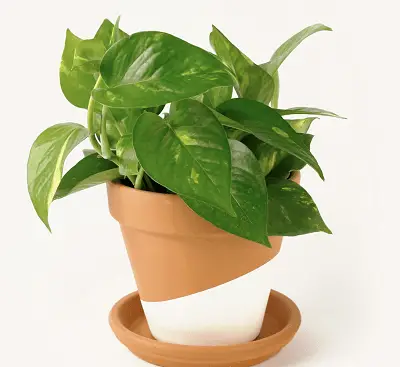
Pothos is the easiest houseplants to grow and maintain. Golden pothos is hardy and can tolerate low light conditions without becoming fussy.
Besides that, this indoor plant can survive under low humidity levels and inconsistent watering habits without complaining. It is a perfect option for beginners into the houseplant platform.
Golden pothos is grown as trailing vines and can reach 30-feet long. The plant has pointed heart-shaped foliages with shades of green, white, yellow, and pale green.
Ensure other pothos care routines are up to the standard. Otherwise, the chances of losing the houseplant are high in the long run. Read My Article: why are my pothos leaves turning yellow?
Snake Plant (Sanseveria)

It is also known as the mother-in-law’s tongue. Snake plant is the most popular houseplant in homes or apartments not receiving sufficient natural sunlight.
The indoor plant has sword-like foliages that reach three feet long and come in many shapes. The leaf shapes give this adorable plant a diverse appearance.
Sanseveria plants can tolerate long periods without water and rarely requires a frequent transplant. The easy to care regime makes the houseplant ideal for beginners.
The foliages also come in a wide color range like yellow, green-striped, and dark green surfaces with golden edges. Snake plant is more vulnerable to root rot.
You Can Also Read: Why Is My Snake Plant Turning Yellow?
Chinese Evergreen (Aglaonema)
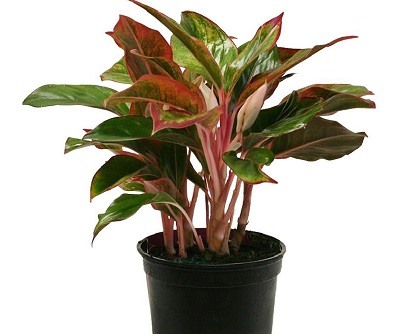
Chinese evergreen is another popular houseplant that can survive under low-light conditions. The plant comes from the aglaonema genus and hails in the Philippines.
The leaves come in a wide color range of plain green, blotched, speckled, and variegated forms. Each leaf grows up to 12-inches long and 3-4 inches wide.
Aglaonema plant thrives in well-draining soil and optimal temperature range of 70-85oF. Freezing temperatures will make the leaves drop, so avoid putting them near cold drafts.
You May Also Read: Why Are My Aglaonema Leaves Turning Yellow?
ZZ Plant (Zamioculcas Zamiifolia)
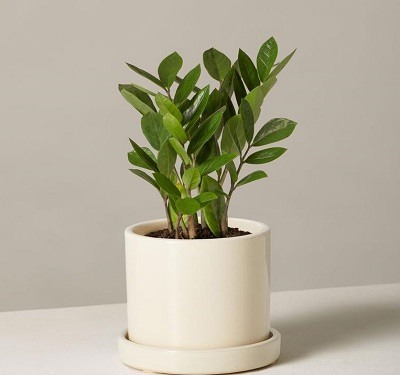
ZZ plant can tolerate both low light and inconsistent watering routines. It is the perfect choice for homeowners who love to go on vacations.
The indoor plant grows up to two feet tall with thick and glossy foliages. The plant can survive under fluorescent lights in an office setting without becoming fussy.
Be sure to apply all-purpose fertilizer every six of the growing season (spring and summer). Use a damp cloth to wipe the dirt on the leaves to facilitate photosynthesis rate.
You May Also Enjoy: Why Does My ZZ Plant Have Yellow Leaves?
Lucky Bamboo (Dracaena Sanderiana)
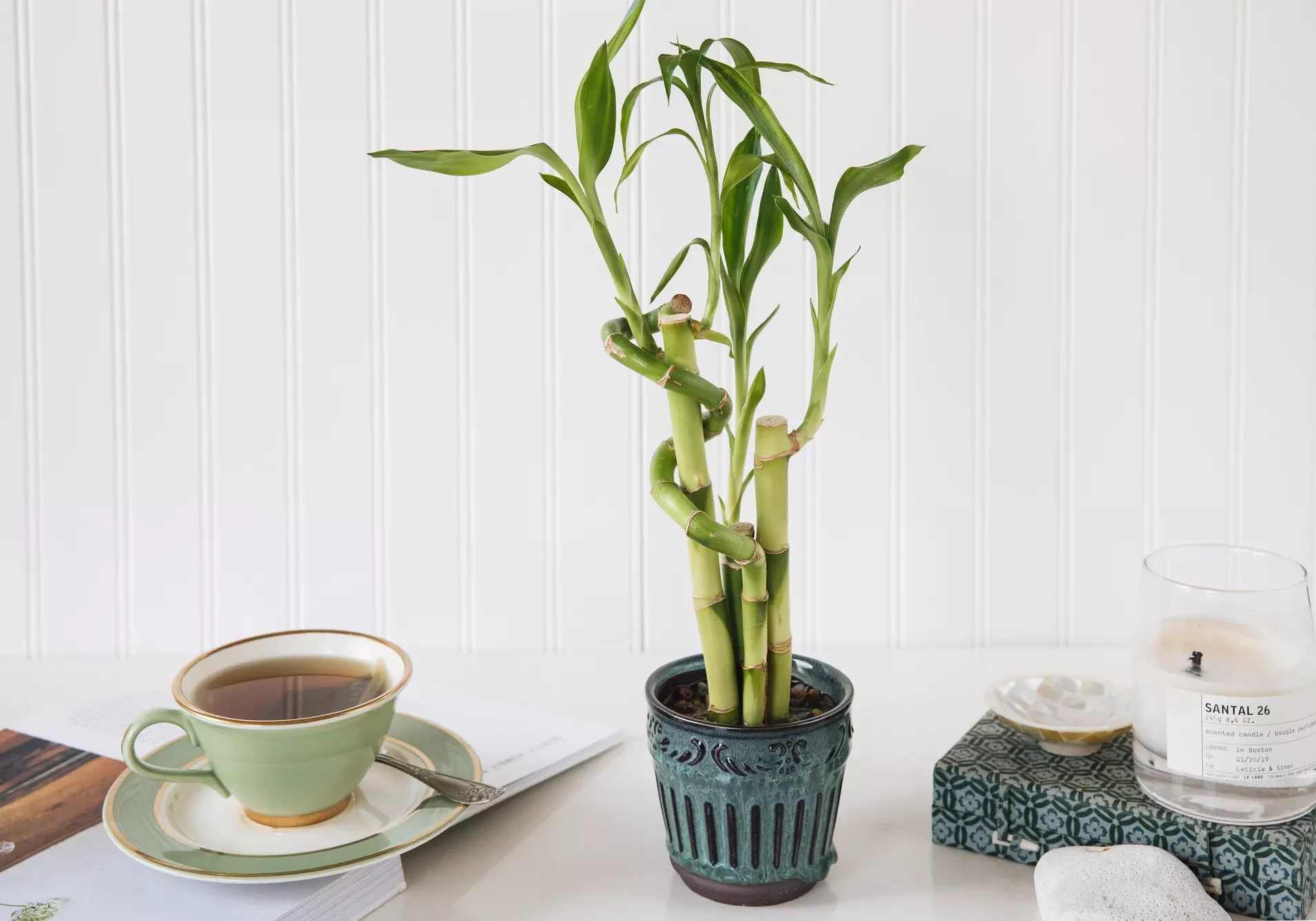
Dracaena is a famous Asian décor for bringing good luck to the house. These low-light indoor trees have pliable stems sculpted into a range of artistic shapes like braids, spirals, and loops.
Lucky bamboo isn’t a true bamboo tree since it belongs to the Dracaena family. It is a slow-growing plant that thrives under low-light conditions.
Place your lucky bamboo near the north-facing window to receive bright indirect sunlight in summer. The light makes the plant stay healthy for an extended period.
Weeping Fig (Ficus Benjamina)
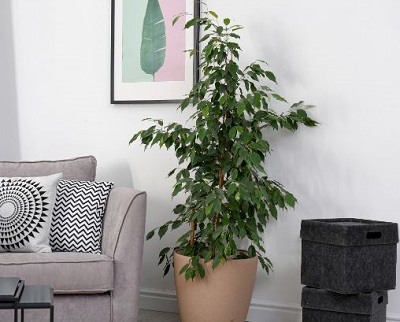
Weeping fig is highly appreciated along shopping mall hallways and doctors’ offices. The indoor plant belongs to the Ficus family.
But weeping fig is more tree-like than other members of the family. The narrow and arrow-shaped foliages line with the delicate woody stems is the reason behind the name.
The weeping fig is more vulnerable to root rot issues. Every plant owner needs to schedule a strict watering routine to avoid overwatering and under-watering problems.
Leaf dropping due to inconsistent watering habits is the common issue affecting these large low-light houseplants. Take the time to read more on weeping fig care requirements before considering it.
Pinstripe Plant (Calathea Ornata)
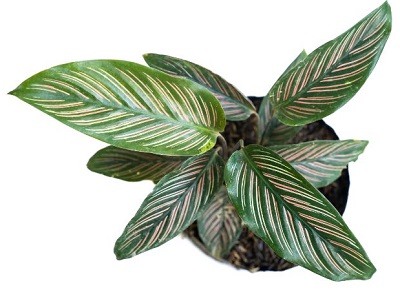
Pinstripe plants are gradually growing in demand due to their striking foliages. The contrasting green and pinkish leaves with purple-red undersides can liven up an indoor living space.
These foliage colors are excellent for popping up home décor. These large low-light plants can reach two feet tall and wide to fill a space.
Calathea ornata is not drought resistant and thrives in high humidity levels. These demanding houseplants need better conditions to flourish.
Test the soil moisture before watering to prevent root rot and apply fertilizer every 4-6 weeks in spring and summer. Read my guide about how to care for calathea Orbifolia for deeper insights.
Cast-Iron Plant (Aspidistra Elatior)
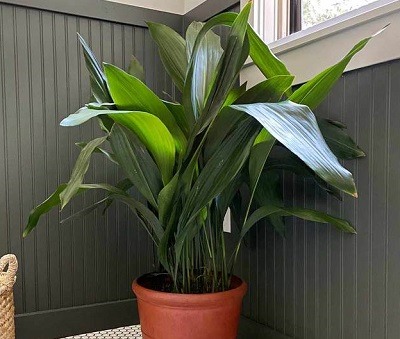
The indestructible cast-iron plant can survive in adverse growing conditions without becoming fussy. It is my favorite low-light plant due to its ability to endure challenging conditions.
The Victorian era species came into existence before peace lilies, snake plants, and philodendrons. It is ideal for decorating indoor living spaces with dull home decors.
The houseplant can handle low-light, temperature fluctuations, and low humidity levels. It can grow up to three feet tall at maturity.
It is a slow-growing plant that takes time to mature into large low-light houseplants. The less prominent purple flowers emerge from the stem base above the soil surface.
Swiss Cheese Plant (Monstera Deliciosa)
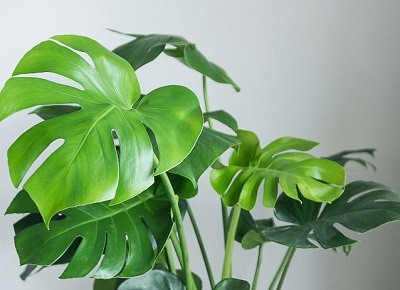
Monstera deliciosa is among the best plants for apartments with low light. The houseplant adds a tropical feeling to the indoor living space.
Swiss cheese plant leaves grow up to two inches wide with holes to look like split philodendron plants. The holes or cuts allow the plant to resist hurricanes or downpours in its native habitat.
The plant can grow up to 8-12 feet tall indoors to make it one of the largest low-light houseplants for your home. It thrives under high humidity and often watering routine.
Apply all-purpose fertilizer monthly in spring and summer. Ensure the fertilizer formula is suitable for houseplants.
You May Also Enjoy: Why Are Variegated Monstera Very Expensive?
Arrowhead Plant (Syngonium Podophyllum)
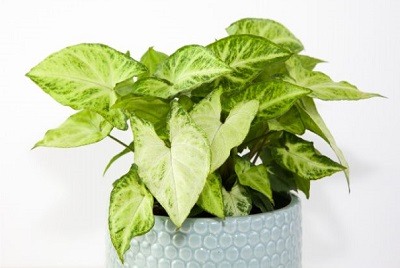
The indoor plant is also known as goosefoot due to its close relation with philodendrons. The trailing vines need ultimate protection from sunlight to make them a perfect choice for low light.
The large arrow-shaped foliages come in several shades like solid green to bronze and variegations. These foliage colorations are the reason behind its popularity in many homes.
The goosefoot plant prefers high humidity and regular watering. Besides that, provide support for the vines to climb. Cut the climbing stems to form various juvenile foliage shapes.
You Can Also Read: Why Is My Arrowhead Plant Leaves Curling?
Rice Paper Plant (Fatsia Japonica)
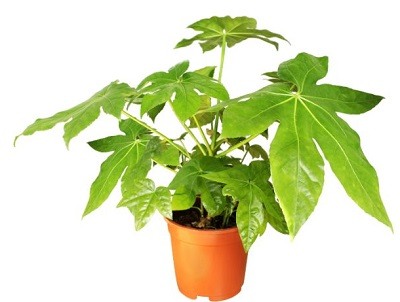
Rice paper plant is also called glossy paper leaf plant or false castor oil. The houseplant hails in Taiwan, southern Japan, and Korea.
It features large thin-paper leaves with a giant hand shape and a few extra fingers. The large lobed foliages grow up to sixteen inches wide, and the indoor plant can reach six feet tall.
Paper plants love indirect sunlight and moderately moist soil to thrive well. Slight water-soluble fertilizer application in summer and spring is essential.
Fatsia japonica undergo dormancy phase in cold winter and rarely bloom due to low-light exposure at home. It develops a cluster of white flowers under bright indirect sunlight.
Peace Lily (Spathiphyllum Wasllisii)
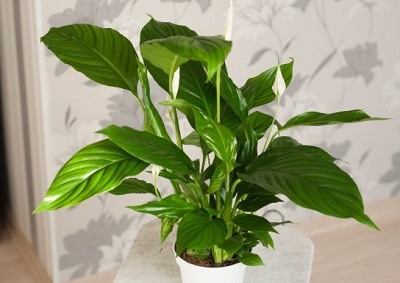
The peace lily is one of my favorite large low-light houseplants. The plant can tolerate low-light conditions and still develop sweet-scented white flowers in spring and summer.
The indoor plant can grow up to six feet tall when grown outside and two to three feet tall when grown indoors. These tall indoor plants are suitable for novice gardeners.
Be sure to keep the peace lily away from cold drafts and grow in well-draining potting soil. Use water-soluble phosphorous fertilizer to feed the plant in summer and spring to stimulate blooming.
You Can Also Read: Why Are My Peace Lily Leaves Turning Yellow?
Dumb Cane (Dieffenbachia Seguine)
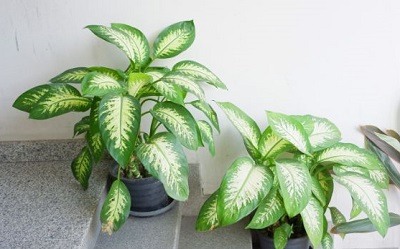
These tall indoor plants are ideal for decorating the interior space. The dumb cane creates a dramatic effect when grown alone or in a group of other indoor plant collections.
The houseplant can reach five feet tall with foliages of twelve-inch wide. The indoor plant thrives under low light and requires regular watering.
Keep the plant away from windowsills and cold drafts to prevent leaf dropping issues in the cold winter. The milky-white sap is slightly toxic to pets and humans.
Asparagus Fern (Asparagus Densiflorus)
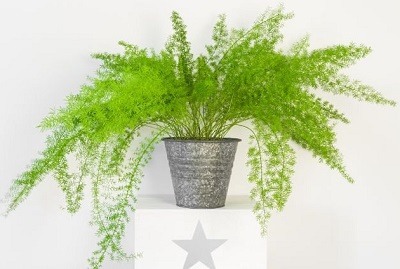
The plant is related to asparagus making it a great choice for beginners as large low-light houseplants. The asparagus fern has long arching stems covered with short leaflets.
The houseplant can reach 3-4 feet wide with cascading stems growing upright to 3-feet long. It is a fantastic low-light hanging plant.
Regular pruning helps the plant form a pleasing compact shape. Besides that, the indoor plant prefers high humidity and moderate soil moisture.
African Mask Plant (Alocasia Amazonica)

Alocasia Amazonica has unusual looks of tropical houseplants. The plant has unique foliages with dark green surfaces with prominent veins running throughout.
Some African mask plant varieties grow up to 2 feet tall and 2 feet wide, while others can reach 5 feet tall and 5 feet wide. These large low-light houseplants make a bold statement in the house.
It is also known as Kris Plant due to its unique-looking leaves. The plant thrives in well-draining soil and high humidity levels.
Corn Plant (Dracaena Fragrans)
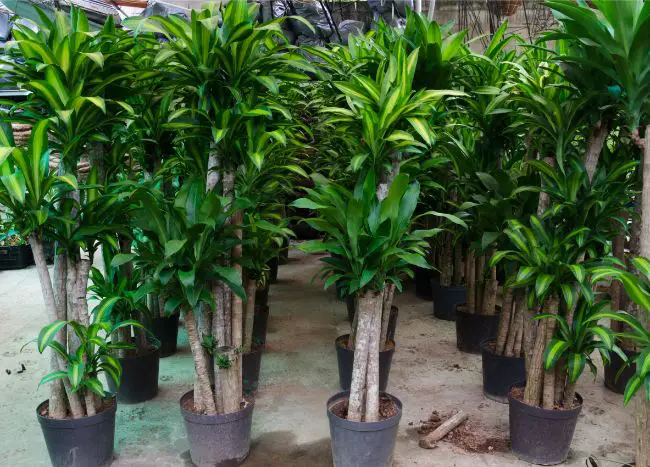
The corn plant is a dramatic species that relate to the lucky bamboo plant. The leafy foliage reminiscent of corn stalks sits atop a thick woody trunk on the corn plant.
The sporting dark green with a lime green stripe runs throughout the center of each leaf to make the plant also called mass cane. The cane-like trunk makes a bold statement to any space.
The house plant grows up to six feet tall and 4-inch wide foliages. It is one of the best indoor plants for dark rooms due to its ability to tolerate low light.
You Might Also Like: How to Care for Areca Palm
Prayer Plant (Maranta Leuconeura)
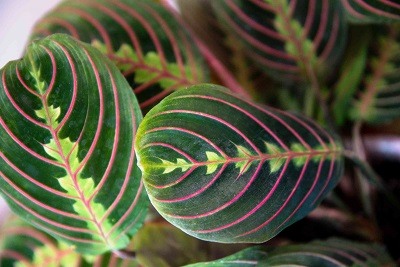
It is a slow-growing tropical plant with tricolor foliages. The houseplant can survive under low-light conditions without becoming fussy.
Too much direct sunlight can burn the striking foliages. Besides that, this low-light plant thrives in a warm and humid environment.
It comes with deep green leaves with yellow and red markings. It is the perfect option for adding a tropical feeling at home or office. Prayer plant requires moderate to high soil moisture.
Ponytail Palm (Beaucarnea Recurvata)
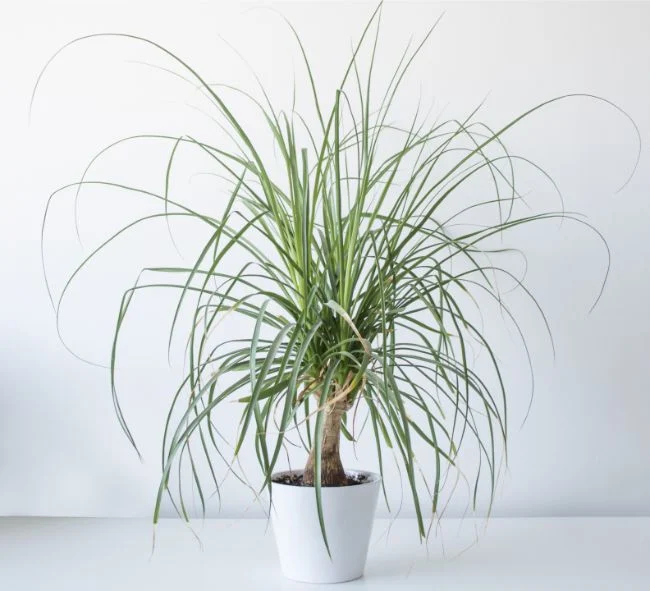
Ponytail palm is the easiest houseplant to grow and can tolerate low-light conditions. The stocky trunk can conserve water to reduce the frequency of watering.
The bottle palm and elephant foot tree are the nicknames of ponytail palm. The palm leaves are vulnerable to turning yellow and dropping due to overwatering.
These slow-growing low light plants can reach 3 to 4 feet tall indoors. Outdoor ponytail palms can reach 15-20 feet tall under favorable conditions.
You May Also Enjoy: Why Does My Ponytail Palm Have Brown Tips?
Spider Plant (Chlorophytum Comosum)

Spider plant is the most reliable houseplant to consider. Besides that, it is a perfect option for beginners looking for large low-light houseplants.
The low light hanging plants can be grown in hanging baskets to mark a bold statement to any indoor space. Brown leaf tips and leaves turning yellow are common problems affecting it.
The airplane plant produces baby plants known as spiderettes in summer and spring. These plantlets are ideal for propagation and the reason behind the name spider plant.
Baby Rubber Plant (Peperomia Obtusifolia)
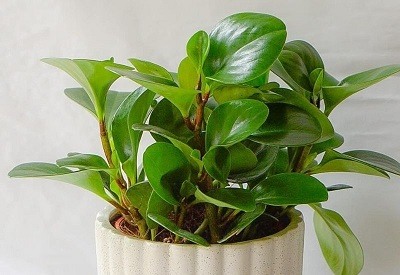
It is a succulent-like peperomia variety native to South America. The indoor plant is known as the baby rubber plant and can survive under low light conditions.
The thick stems and oversized foliages help to store water for the plant. The houseplant species require a less watering routine.
Average humidity and well-draining soil will spearhead successful growth. Besides that, the houseplant is less vulnerable to pests and diseases.
You Can Also Read: 25 Recommended Peperomia Varieties with Pictures and Names
